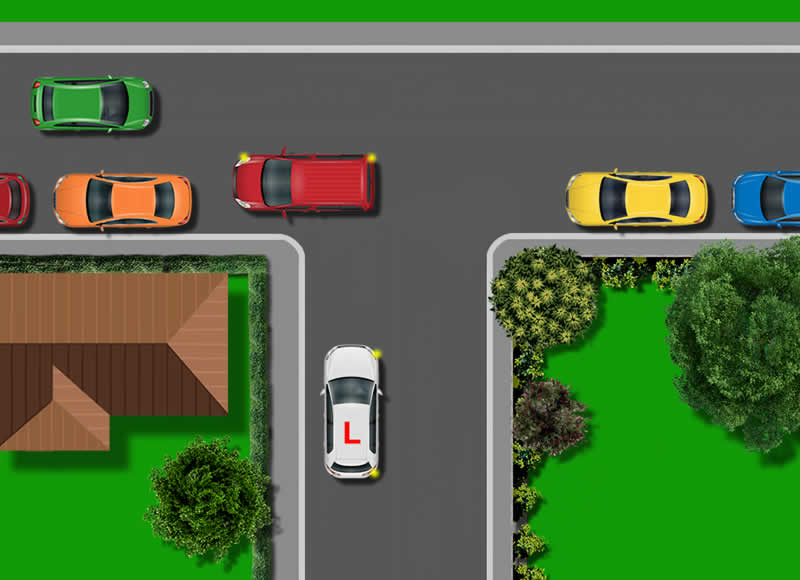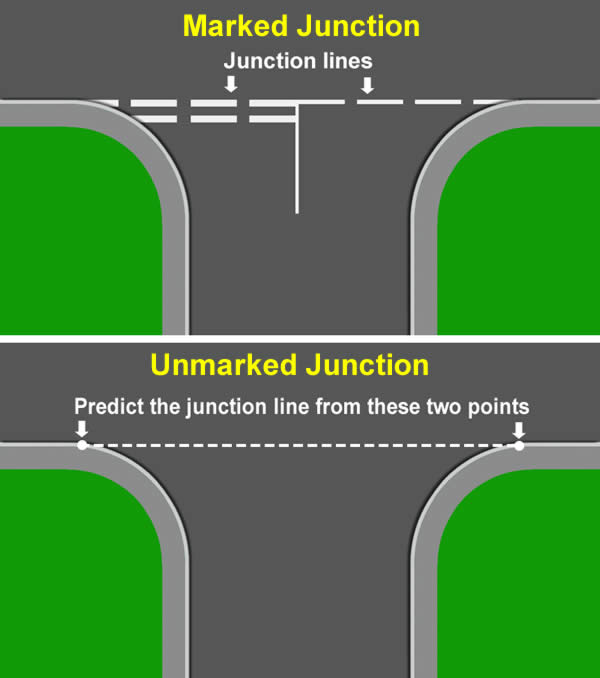During your time learning to drive, you’ll be dealing with a lot of junctions. One such junction is what we refer to as ‘unmarked junctions’. Here, we’ll explain what an unmarked junction is, who has priority, how to approach them and where you’ll usually find unmarked junctions.
What is an Unmarked Junction?
A junction is where two or more roads meet, but in the case of an ‘unmarked junction’, there are no traffic lights, road signs or road markings that inform you of who has priority.

Here we can see an unmarked T-junction, where the road that the learner driver is driving on meets another road. It’s an unmarked T-junction because there are no traffic lights, road signs or markings to indicate a junction is ahead.
Where Will You Normally See Unmarked Junctions?
Unmarked junctions are found in areas with low traffic density. You will often come across unmarked junctions in quiet residential streets or narrow country lanes.
How do you Approach an Unmarked T-junction?
Always drive at an appropriate speed for your surroundings. If driving on quiet residential backstreets or country lanes, you should expect that unmarked junctions are likely to be a characteristic of the area.
If driving along a road that you’re unfamiliar with, look ahead for houses, trees, fences etc that appear to be directly in your path ahead. This is usually an indication that a junction is up ahead. Also keep a look out for cars that might be crossing from left or from the right.
Approach an unmarked junction as you would any other junction by using the mirror, signal, position, speed and look routine. As you near the junction, you’ll need to predict where you think the junction line would be, if there was one.

As we can see from the diagram of a marked junction, junction lines are painted at the point where the two roads meet. Being as there are no road markings at an unmarked junction, you’ll need to visualise and predict where the junction lines will be from the two points furthest away on the kerb.
Who has priority at an unmarked T-junction?
If you are approaching a T-junction, you should stop and give way to traffic that is on the carriageway you intend on joining.
Hazards Associated with Unmarked Junctions
Unmarked junctions do not have signs warning you of the impending hazard, so you need to practice defensive driving to anticipate hazardous or dangerous situations. Learner drivers are also likely to misjudge road positioning due to there being no road markings. With plenty of practice however, road positioning will become accurate.
Being as unmarked junctions are often located around quiet residential backstreets, you’ll often find cars parked close to the junction. Parked cars can be hazardous as they may obscure approaching vehicles, cyclists or pedestrians crossing the road. In this instance, you may have to treat an unmarked junction just as you would a blind junction and use the creep function of your automatic car.
Learning to Drive at Junctions
Junctions can be challenging and complex and take a lot of practice. for further information about the different types of junctions, see learning to drive: junctions.